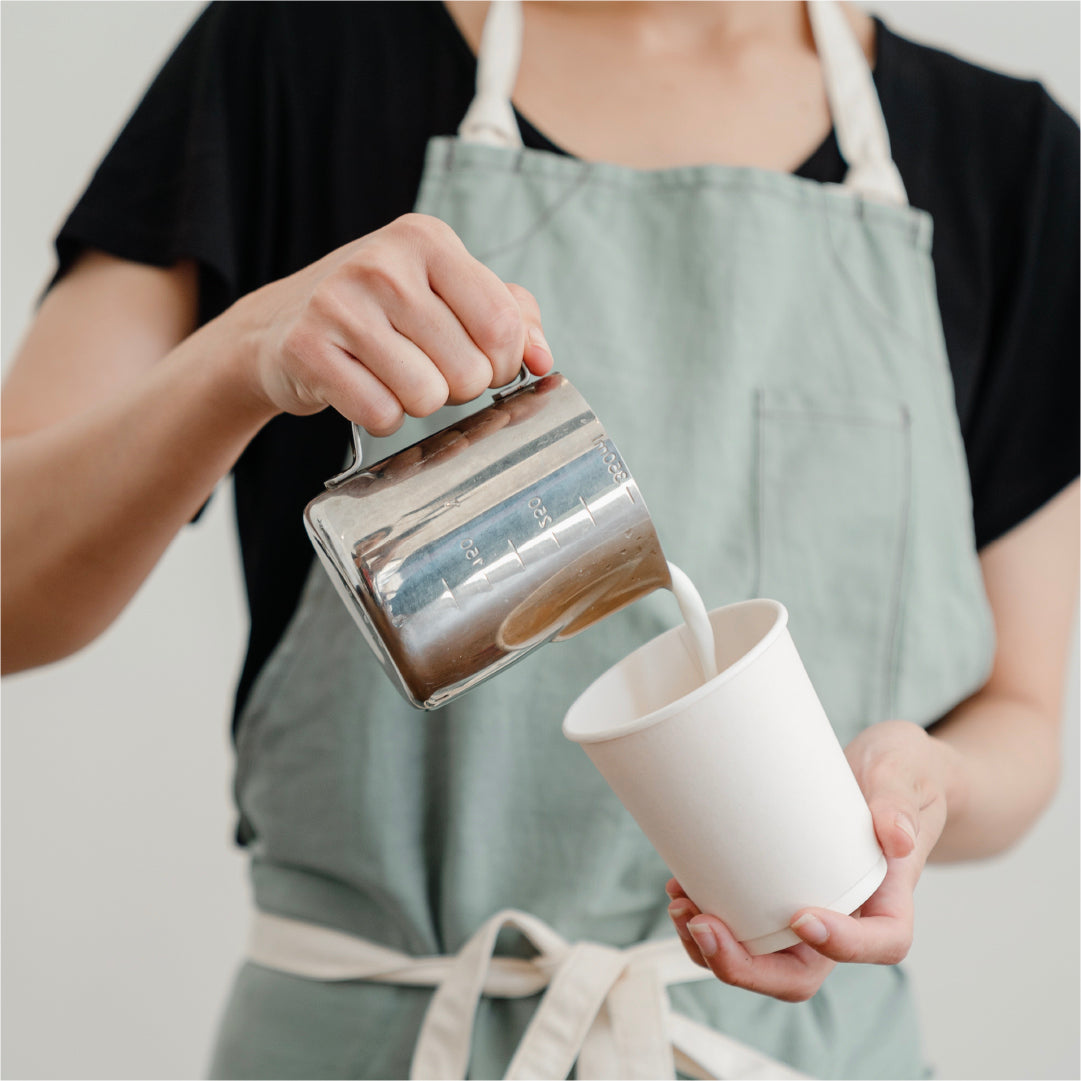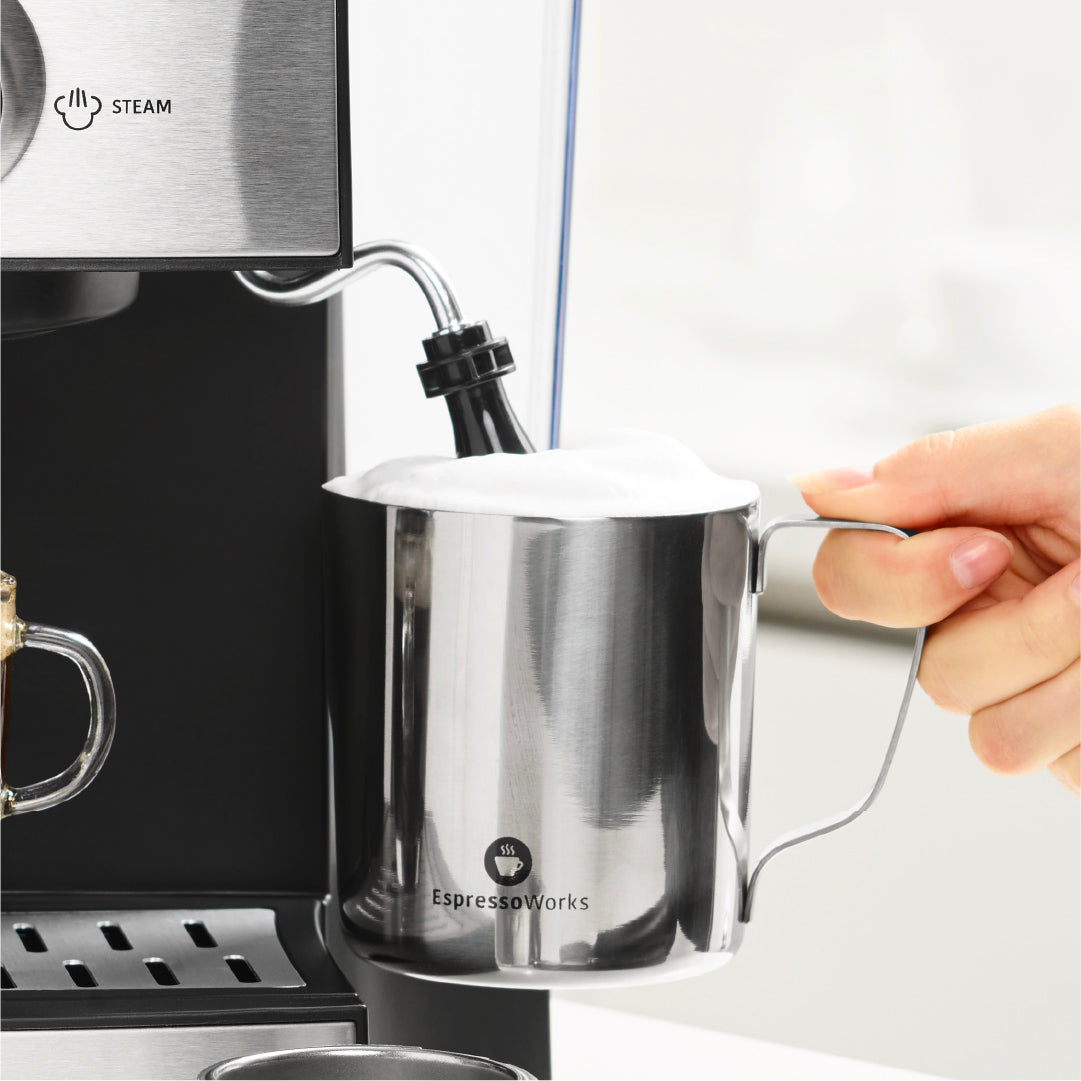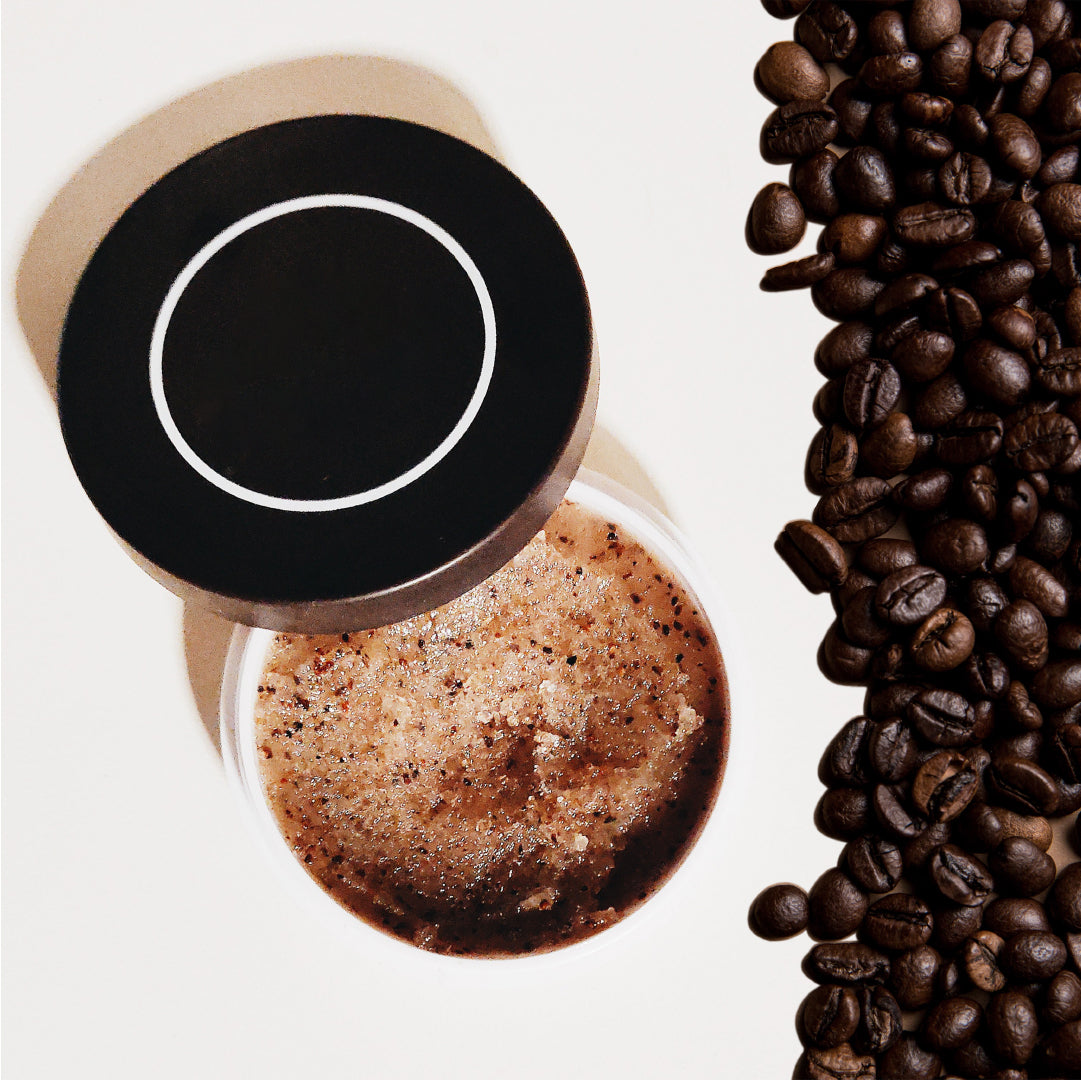
Experienced baristas realize that knowing how to froth milk well can mean the difference between a great coffee beverage and a disappointing one. Milk is frothed when air is added to it, and the more air the milk is exposed to, the thicker the foam will be. There are different ways to froth milk, from manual frothers to automatic frothers.
Choosing Your Milk
Some seasoned baristas, when explaining how to froth milk, maintain that whole cow’s milk is best for frothing. But there are many non-dairy options as well, including soy milk, coconut milk and almond milk. How well one of those non-dairy options works for frothing depends on the brand and the protein content; higher protein content lends itself to better frothing.
Finding the Right Temperature
Frothed milk, depending on the coffee beverage, can be either hot or cold. A cappuccino, for example, calls for warm foam, and getting a high-quality warm foam requires getting the temperature right. As a rule, 140-155 F/60-68 C is the best temperature range for frothing hot milk. If the milk boils and becomes too hot, it won’t lend itself to a high-quality froth.
Choosing the Right Amount of Milk
When learning how to froth milk, it’s important to use the right amount — and how much milk one should use depends on the beverage and the capacity of the milk frother being used. Seasoned baristas expect milk to double in volume when it is frothed, which is why the frother should not be filled by more than half.
Using a Self-Contained Unit
One option for learning how to froth milk is a self-contained unit, which is likely to include a carafe that can be plugged right into an espresso machine. Using this hassle-free option, one need only pour the milk into the carafe and plug the carafe into the espresso machine. Then, users select the type of beverage that they want, and the frother will automatically add the right amount of frothed milk to a cup.
With the EspressoWorks 10-Piece Espresso & Cappuccino Maker Set, one needn’t search for a separate frother — it comes with a built-in frother and reservoir. The set’s easy-to-use frother will automatically heat and froth the milk from its reservoir before pouring it into a cup. And the frother has different settings for different types of milk-based coffee beverages. If one chooses the “cappuccino” setting, the milk will be frothed to perfection with the type of foam a cappuccino requires. Or, if one chooses the “latte” setting, a caffè latte will be provided.
View All EspressoWorks Espresso Machine Sets.
Using a Manual Milk Frother

The first step, when learning how to froth milk using a manual frother, is to choose either hot foam or cold foam; if hot foam is required, the milk should be heated to 140-155°F / 60-68°C before being poured into the carafe. Manual milk frothers usually have a marking that tells baristas the maximum amount of milk to use and helps them avoid using too much.
The next step is to test the frother, which is done by pushing its plunger in order to make sure that it is working correctly. With glass carafes, it’s important to avoid applying too much pressure and possibly damaging the carafe or the plunger. Metal carafes, however, are harder to damage.
After testing the manual frother, it’s time to froth the milk — which is done by holding the carafe with one hand and operating the plunger with the other. The plunger should be moved up and down for about 30 seconds.
The final step is to check the foam. If the foam doesn’t have the right consistency, more plunging might be needed. Once frothed, the milk can be added directly to the cup.
Using a Milk Frother Wand

Steam and Froth milk with the Built-in Steam Wand of the EspressoWorks 7 Piece Espresso Machine
A milk frothing wand is a semi-automatic alternative to manual frothers or automatic frothers. When learning how to froth milk using a frothing wand, the first step is to take it to the kitchen sink and turn it on for a few seconds — which will remove any water droplets that might be sticking to the wand. And baristas will need to decide if they need hot or cold milk and pour it into a container.
The next step is to place the frother’s head into the milk — but not too deep — and froth the milk. If one doesn’t insert the head deep enough, however, it will make a mess. But if the frother is inserted correctly, a froth will begin forming within seconds.
The final step is to check the froth and make sure the foam has the right consistency. If it does, turn the frother off.
Frothing milk isn’t difficult, but there is definitely an art to learning how to froth milk — and doing it correctly can result in an endless supply of great coffee beverages.
View the best frothing jugs and accessories.









Share:
How To Make Café De Olla At Home
How To Make Pour Over Coffee